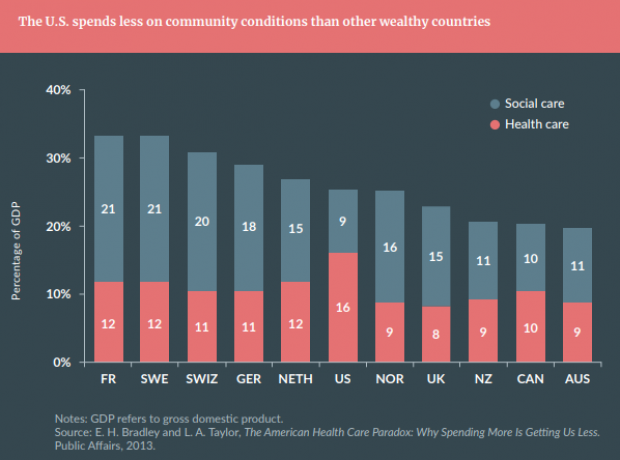Squeezed by rising health care costs, states have shifted money away from “social spending” on programs like public education, public health services, housing assistance, food assistance and income support. That shift “is having dire and long-lasting consequences for the nation’s health and community well-being,” warns a new report from the Lown Institute, a nonpartisan nonprofit that advocates for affordable health care.
The report says the United States spends only 9% of its economy on improving such community conditions, much less than other advanced countries. That, in turn, has led to worse health conditions and higher health care spending, creating what the study’s authors describe as a vicious cycle.
In other words, the authors write, more state spending on health care may be eroding Americans’ health.
The report focuses on California, where the authors say that growth in health care spending has far outpaced growth in spending on public health, the environment and social services. Between 2007 and 2018, the state’s spending on health care rose 146%, from $48 billion to $119 billion, the report says, while spending on social services, public health and the environment grew by 36%. That “growing imbalance” means the state “is sacrificing potential long-term health gains for short-term health stopgaps,” the authors write.
They say that as health care costs continue to climb and squeeze other parts of the budget, lawmakers will have to decide whether to raise taxes, rein in health spending or pursue some combination of the two. But, they say, California should look to curb wasteful health care spending and redirect that money toward increased funding for social, environmental and community programs. “The long-term health of the state,” they write, “depends on it.”






